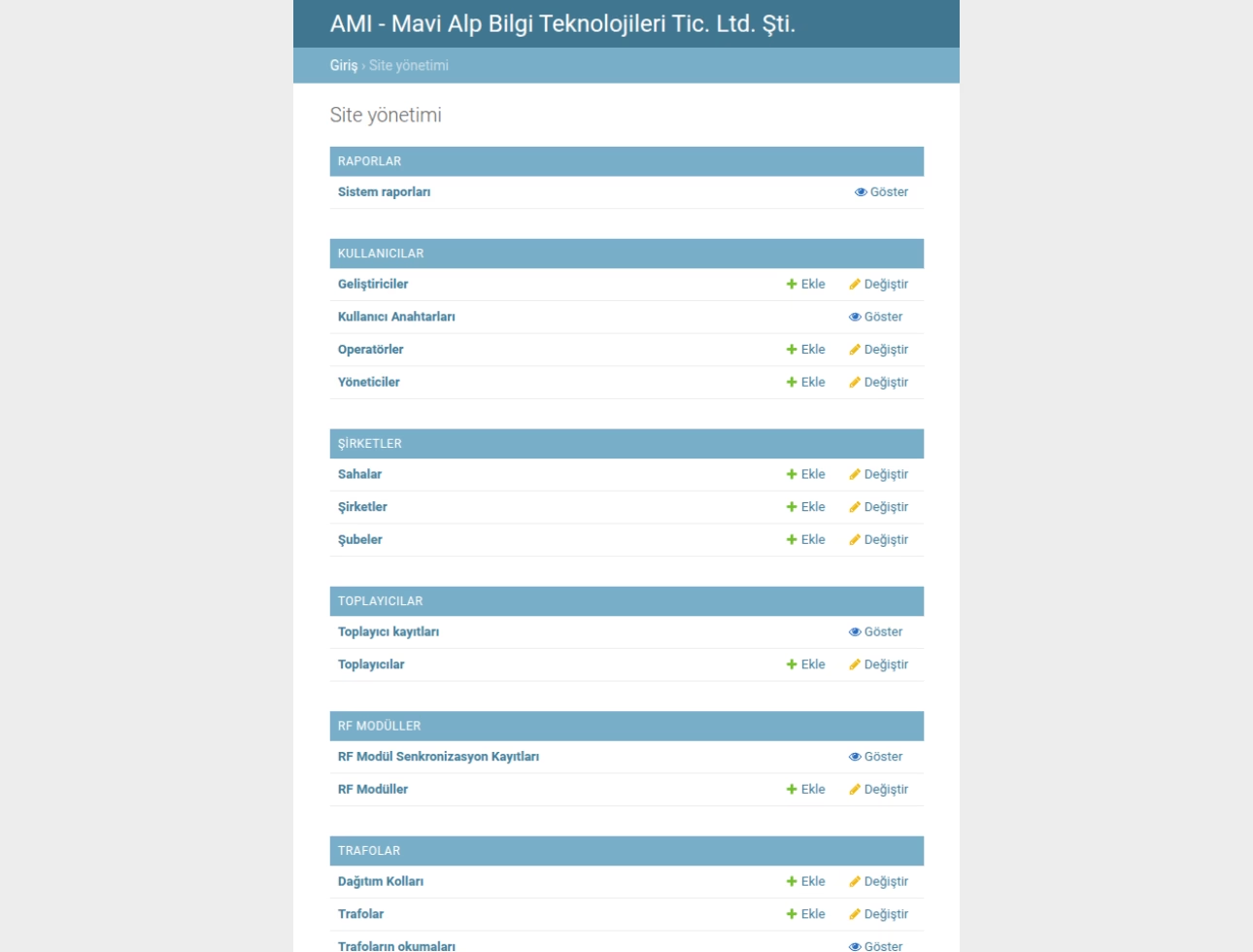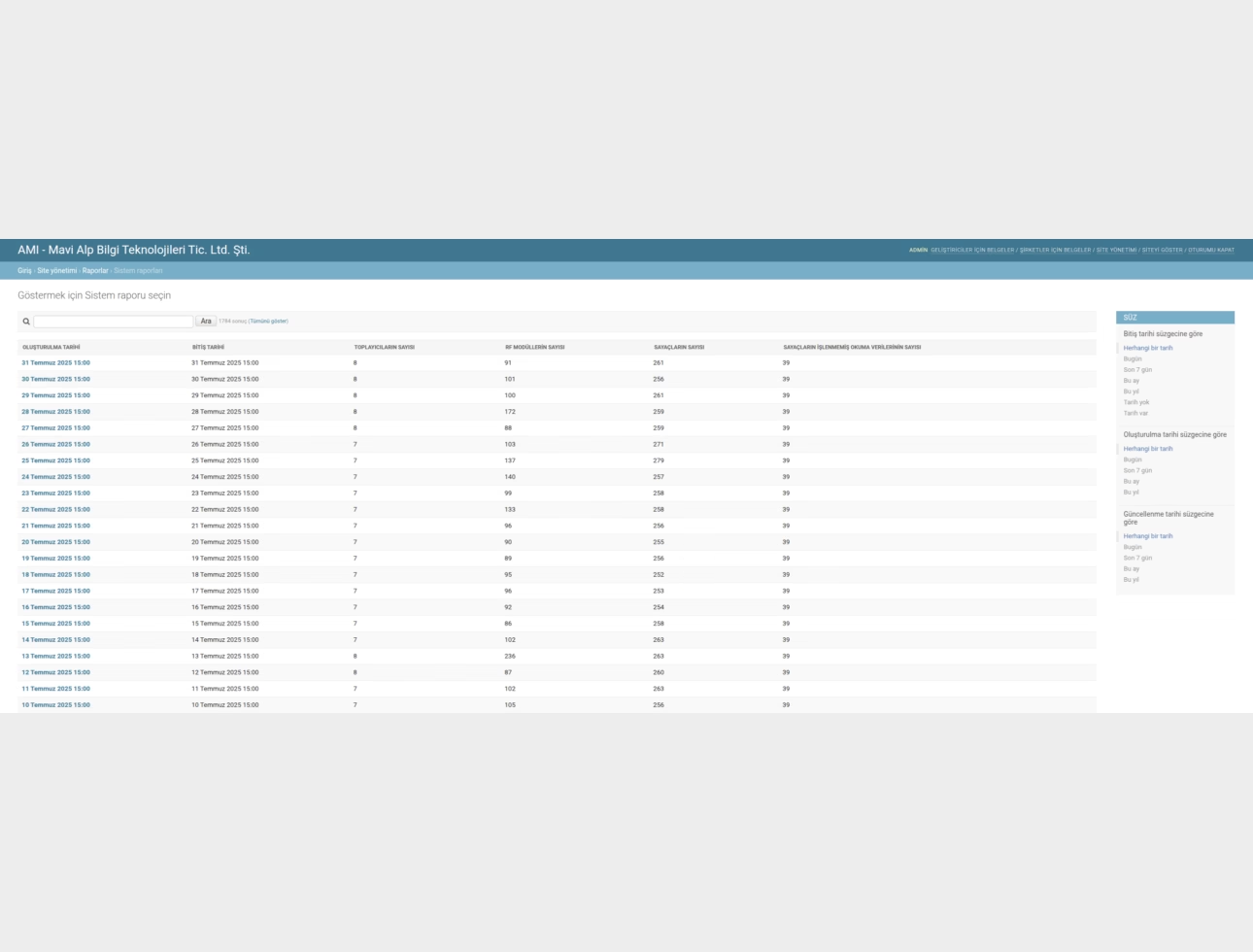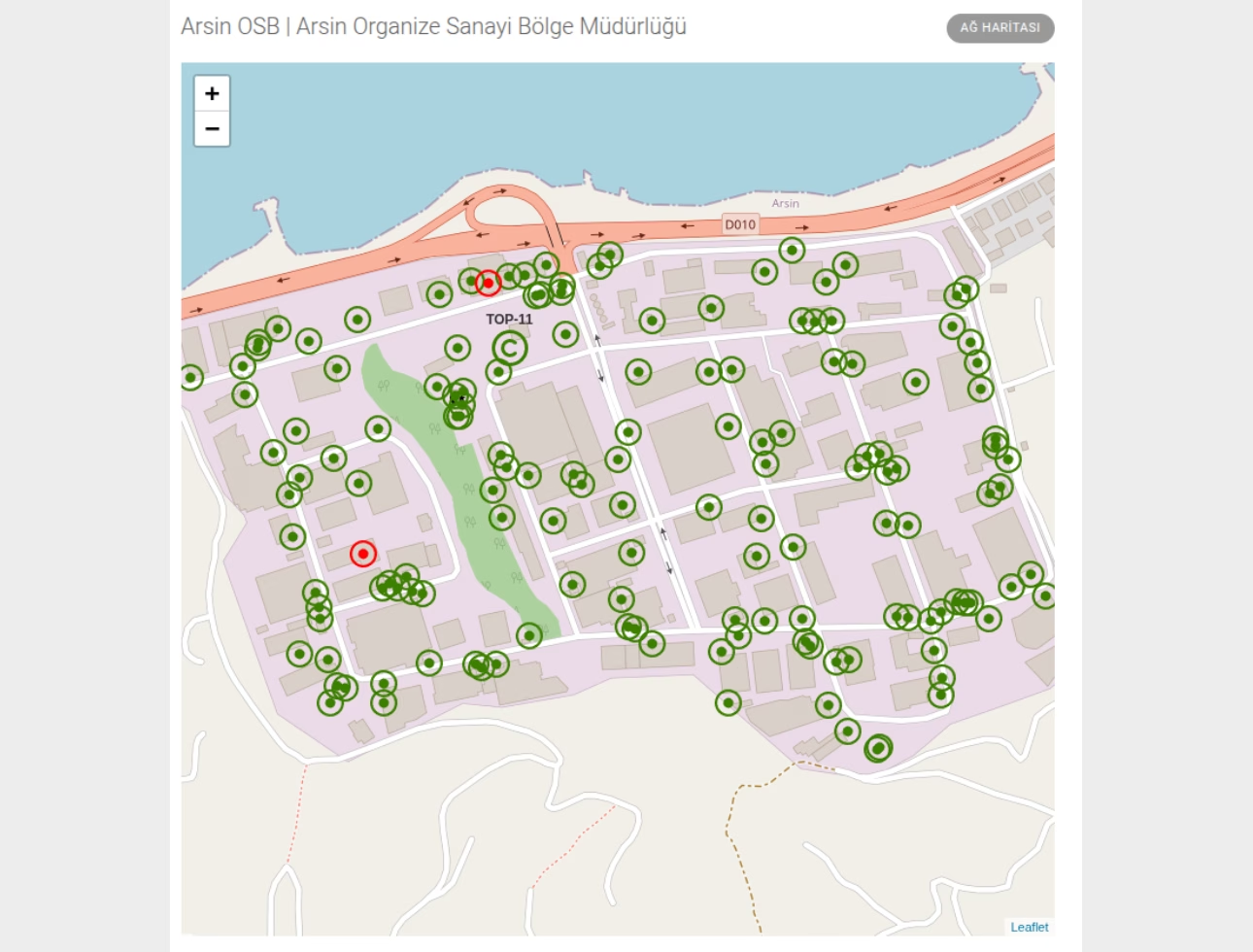It integrates high-frequency meter data collected from the field, via collectors and RF modems, into a central system, offering real-time monitoring, advanced reporting, and effective operational control capabilities. This platform has been developed to enhance energy efficiency, reduce operational costs, and maximize grid reliability.
Key Functions and Features:
User and Role Management: Users with different authorization levels (Developers, Operators, Administrators) can be added, edited, and deleted from the system. Each role's system access and manipulation permissions can be defined. Unique API keys assigned to users for performing specific operations can be managed.
Company and Field Management: Companies, their branches, and fields can be added, edited, and geographically located on a map, in accordance with the hierarchical structures of energy distribution companies. Company contact information, operational parameters such as maximum meters per RF module, and API usage permissions can be managed.
Data Collector Management: Field data collector units (such as REACH-HD) can be registered in the system, and their active status, IP addresses (IPv4 and IPv6), port information, and software versions can be monitored. The synchronization status and dates of collectors with the AMI Web Service can be viewed.
RF Module Management: RF modems (such as U-MOTE, Mahmote) in the field are added to the system, and their detailed information (serial number, IP address, reading period, number of connected meters, active/error status, synchronization date) is tracked. Synchronization records sent by RF modules to collector units can be examined to verify the module's real-time operation and connection status. Some settings of RF modules, such as reading periods, can be configured remotely, and error statuses can be monitored.
Meter Management and Data Analysis: Electricity meters are registered in the system, and information such as serial number, connected RF module, active status, and last reading date can be viewed. Values belonging to OBIS (Object Identification System) codes read from meters (energy, voltage, current, etc.) are listed in detail, and the start/end time, collector information, and matching status of each reading record are monitored. Load profile data (fragmented and integrated) obtained from meters is stored in the system, allowing for detailed energy consumption analyses. Meter fault records detected by RF modules are automatically saved in the system and can be tracked with information such as fault type, start/end date. Raw meter data coming from collectors can be examined before processing, and their matching statuses can be updated. This plays a critical role in ensuring data integrity. Based on meter data, graphs such as Capacitive Reactive ratio and Inductive Reactive ratio can be created, providing visual analysis capabilities.
Communication and Transaction Logs: Details and sending history of reports generated by the system and sent to users (system report, meter fault notifications) and other emails can be reviewed. All transactions performed by collector units (meter reading, adding relationships, RF module setting updates, etc.) are kept as detailed logs. These logs include information such as transaction type, status, HTTP method, URL, error codes, and timestamps. All add, update, and delete (manipulation) operations performed within the system are recorded with information on who performed them, on which object, and when. This is an important feature for auditing and security.
API Documentation: Detailed technical documents (authentication, endpoint information, etc.) about the system's APIs are provided for developers and company representatives.
Advantages:
Real-time Grid Visibility: Provides deep insights into the energy grid with instant data flow from field meters and devices.
Operational Efficiency: Reduces the need for field visits and manual intervention through remote meter reading, fault detection, and device management.
Advanced Data Analysis: Supports decision-making processes by performing detailed analyses with load profile, OBIS data, and fault records.
Robust and Reliable Infrastructure: Continuous and secure data communication with RF Mesh technology and comprehensive logging/monitoring features.
User-Friendly Interface: Easy management of the system with a detailed and understandable web interface.
Flexibility and Scalability: Offers an adaptable and expandable structure suitable for different company structures and field needs.



